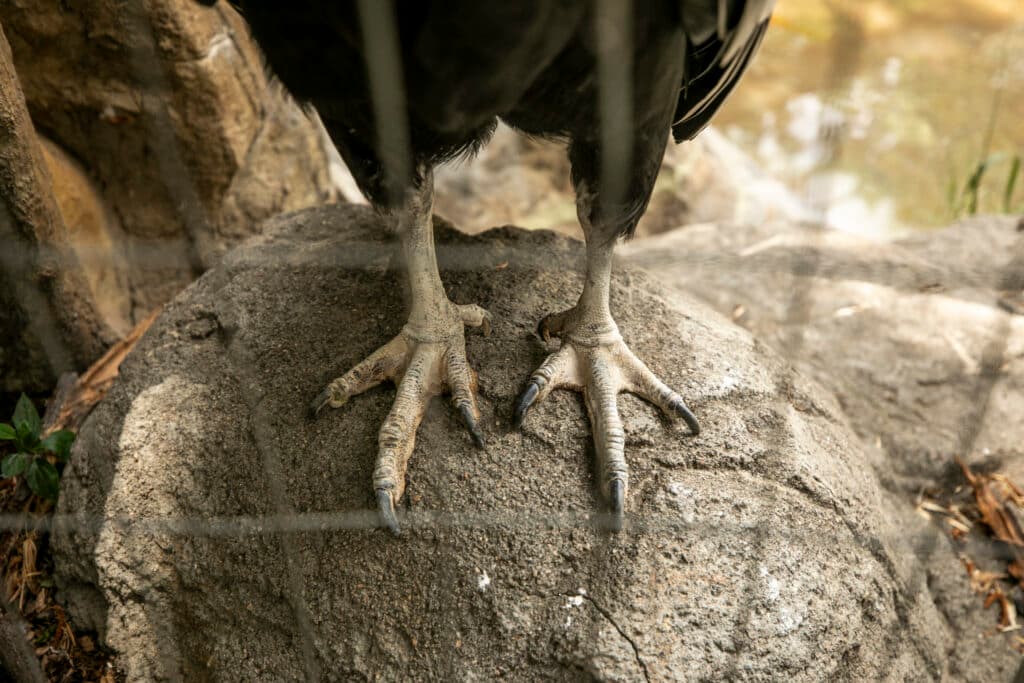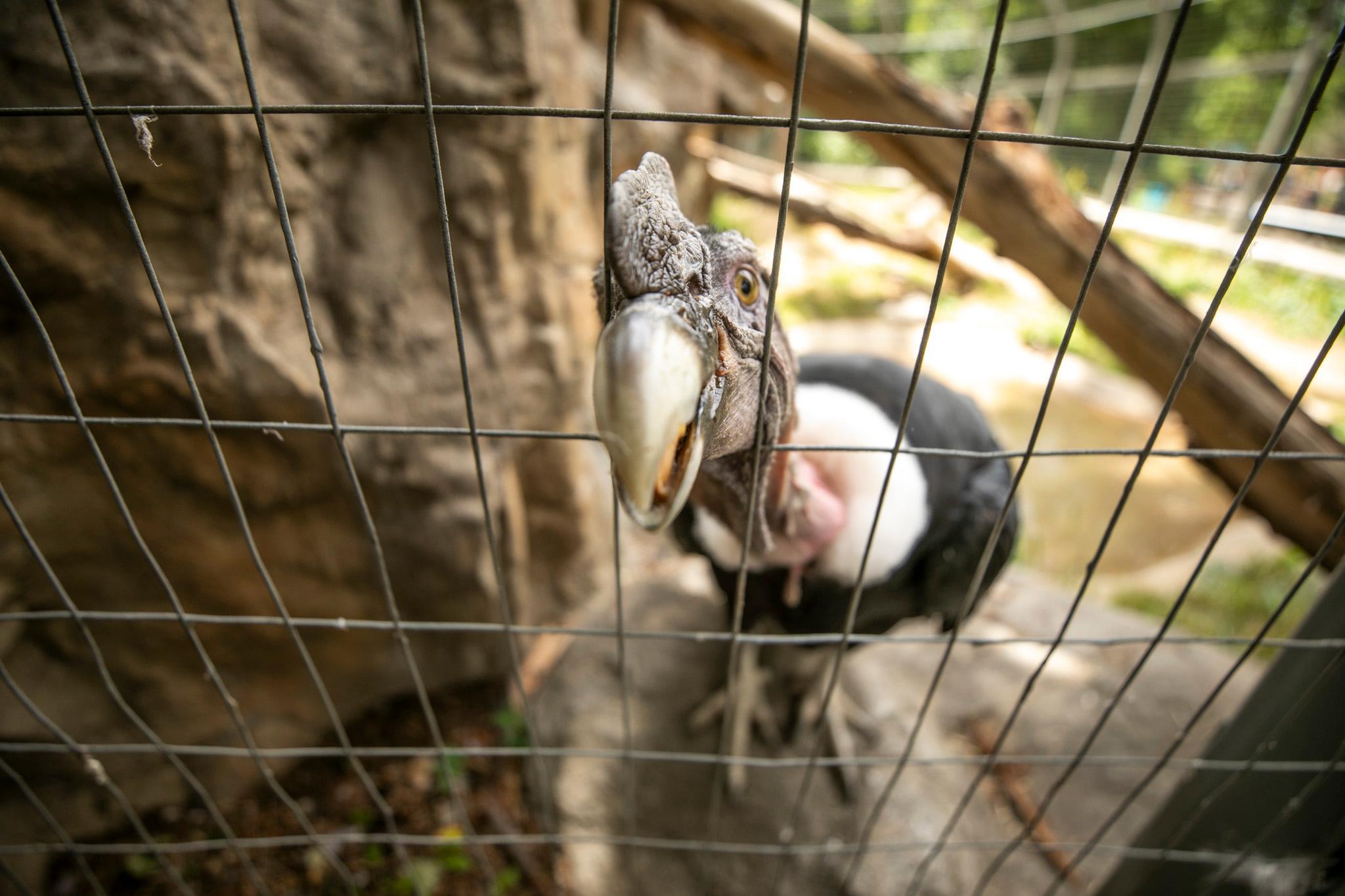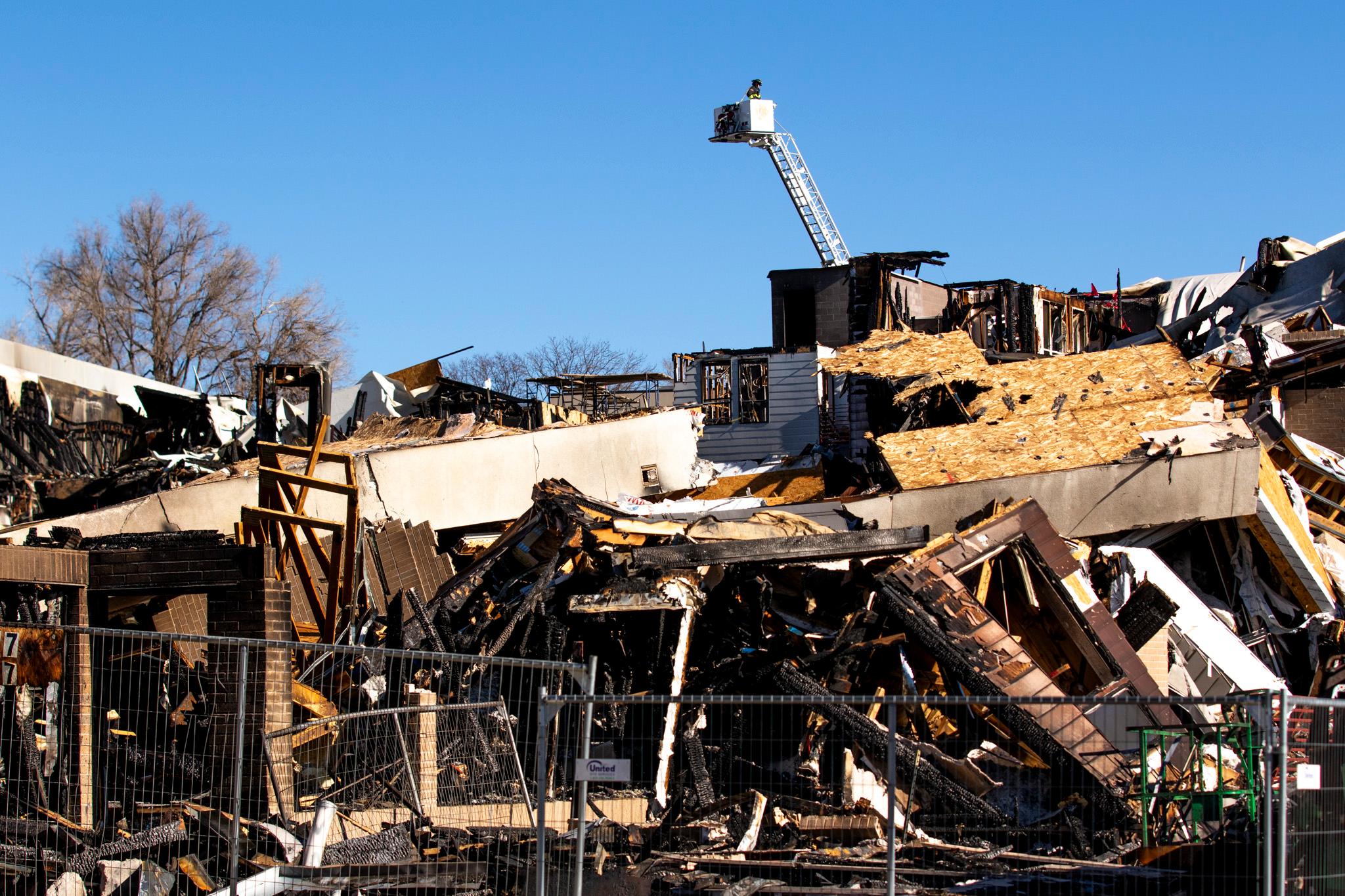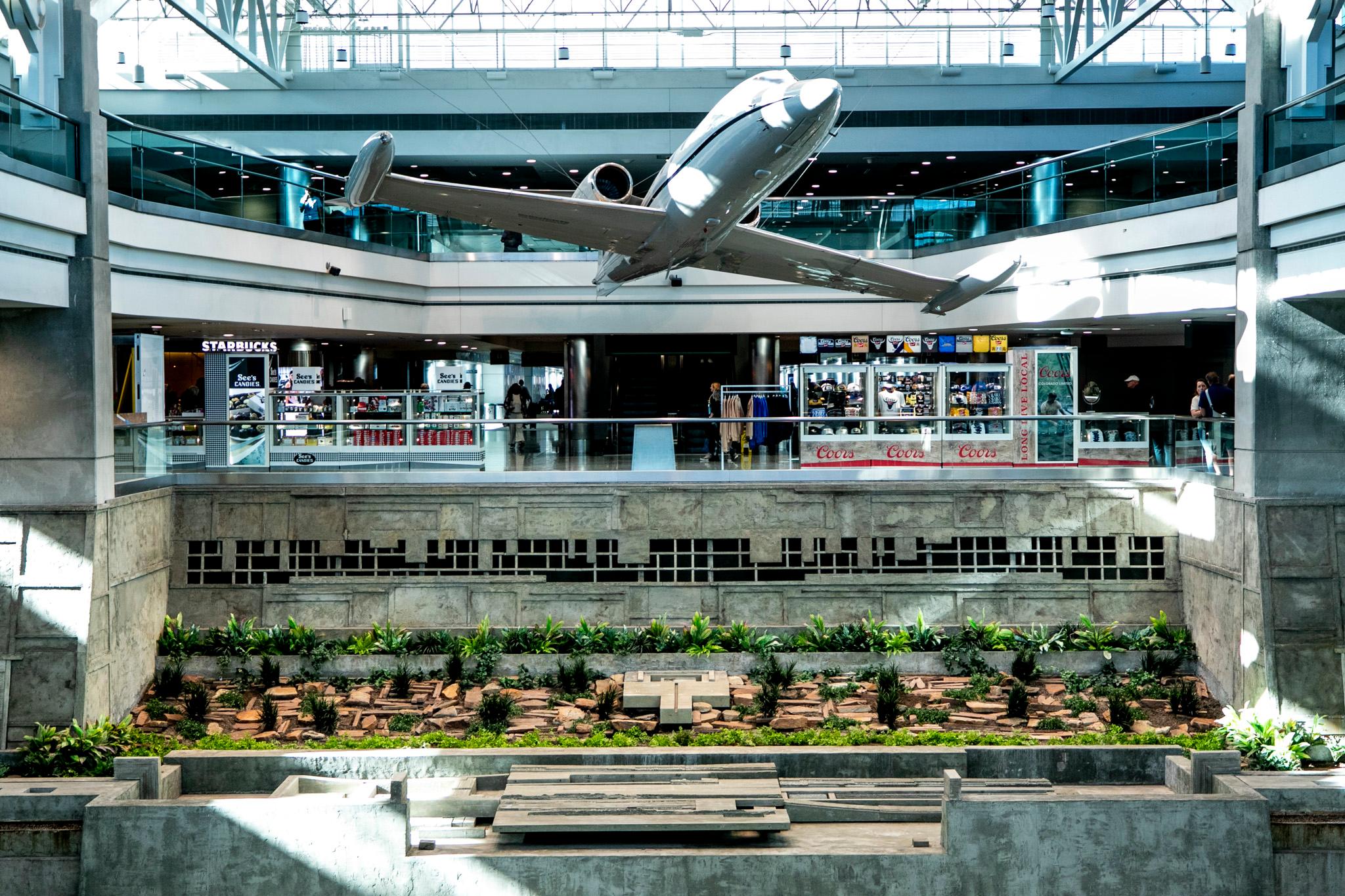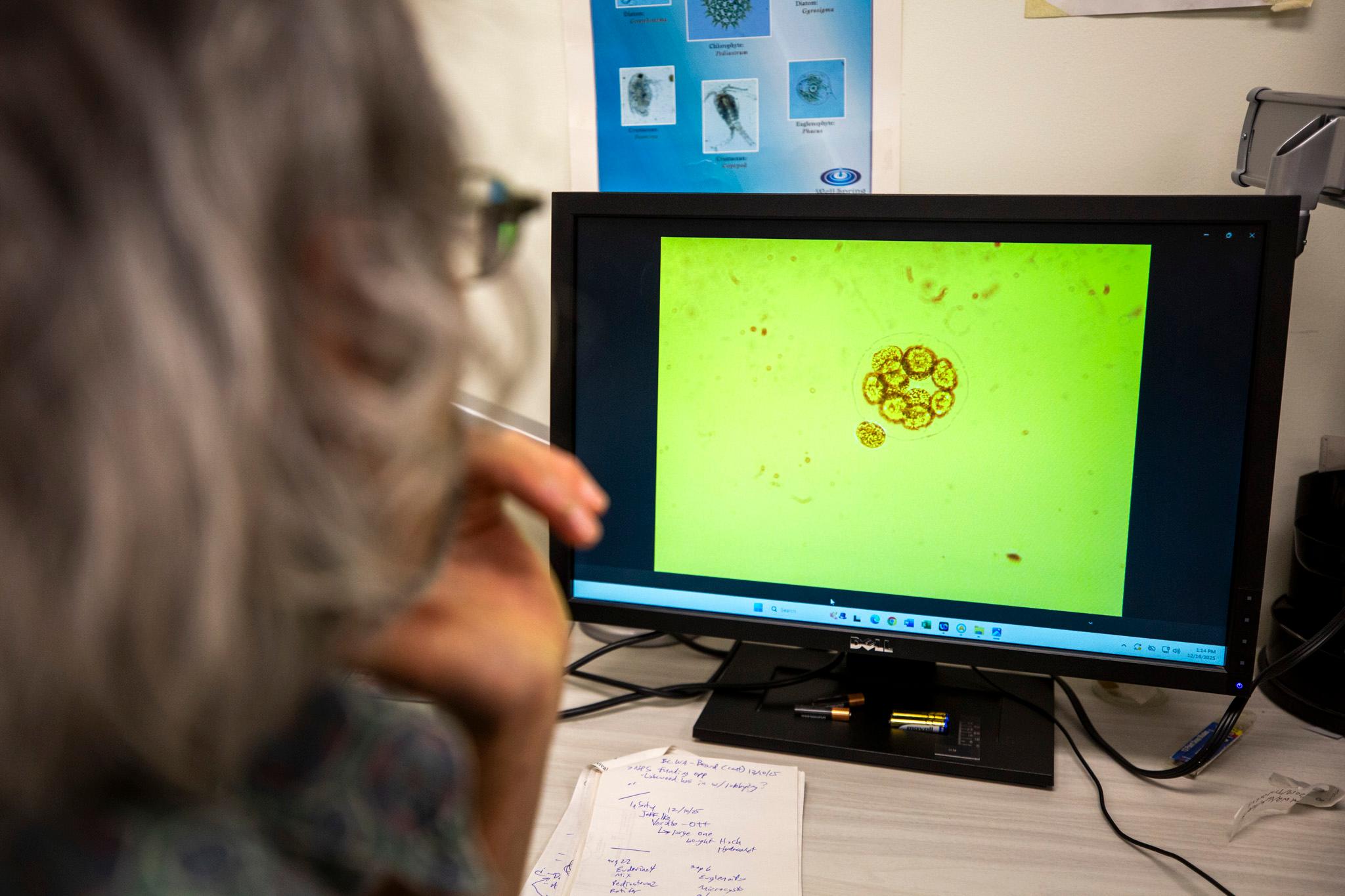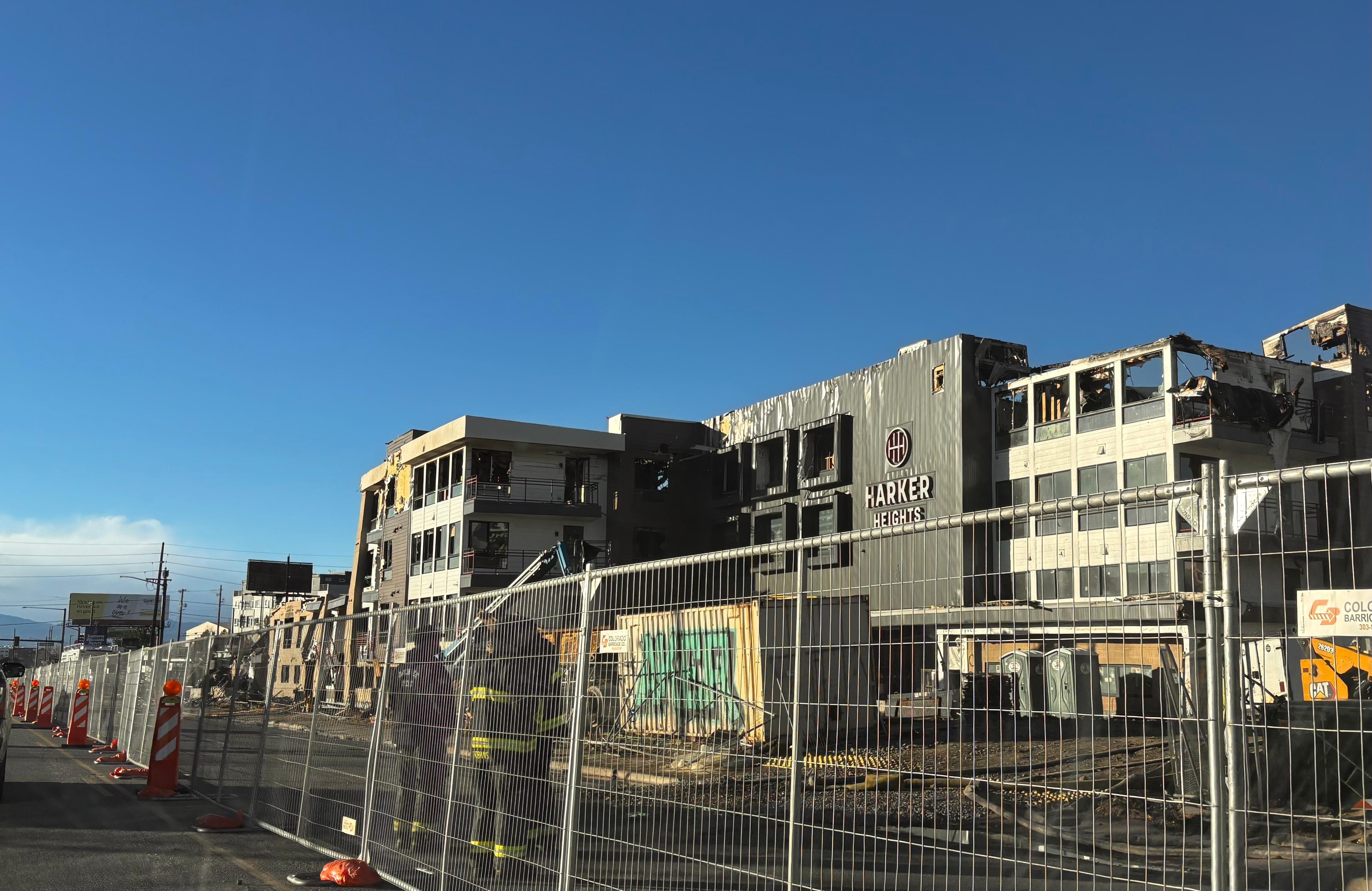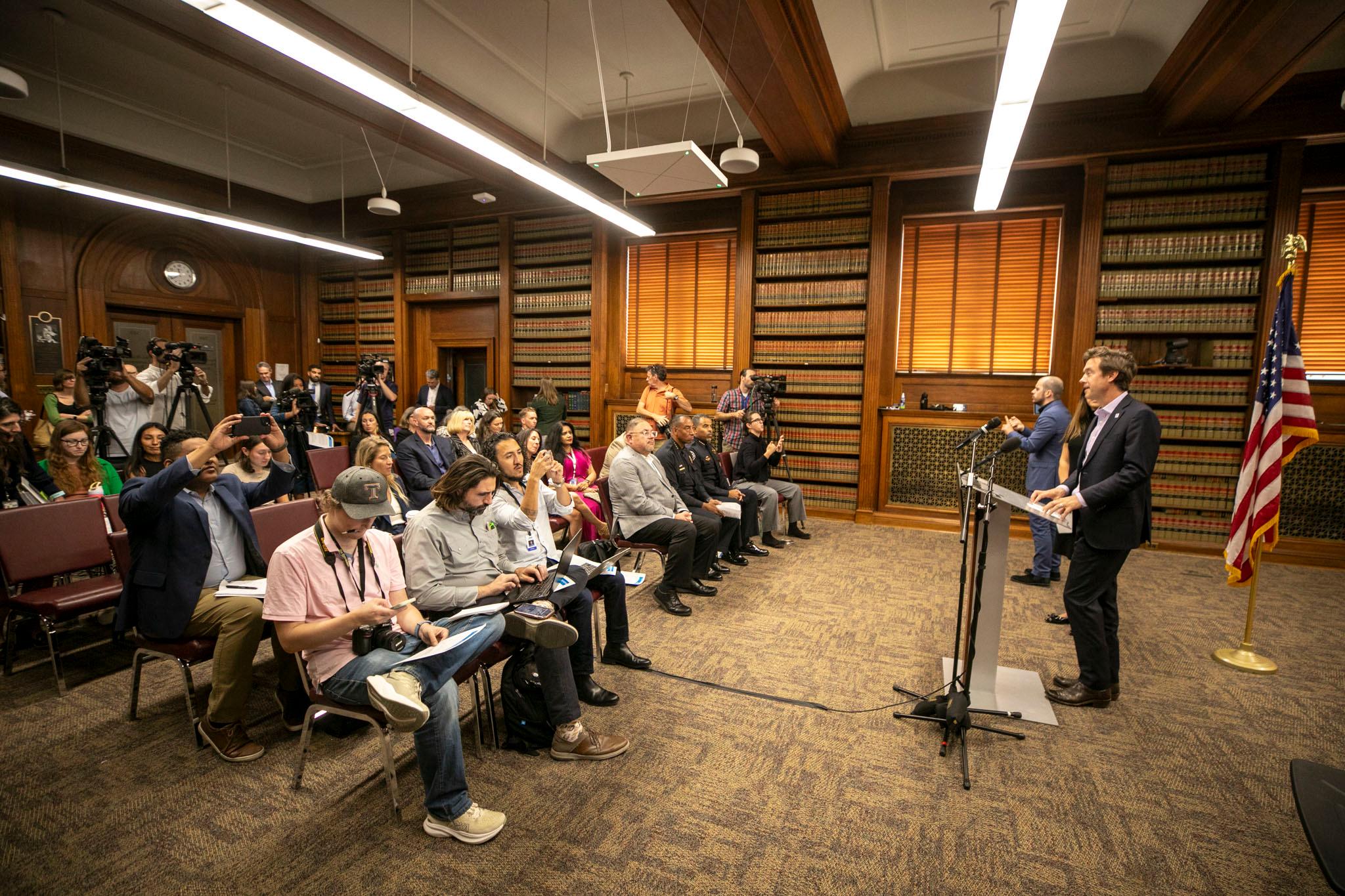In the Denver Zoo’s aviary, visitors can meet the playful Andean condors Evita and Andy. The enormous birds stand tall on top of the rocks. When Andy jumps toward his human audience, he spreads his wings for everyone to see and pokes his beak through the fence. He’s almost posing.
Seeing him enjoy the attention, it’s easy to forget his beak can tear through bone and his wingspan is almost 8 feet. Condors are some of the biggest and longest-lived birds in the world, living up to 70 years.
And for the Denver Zoo Conservation Alliance, these birds are more than just attractions in a cage. Thousands of miles from Colorado, a team of DZCA researchers has been conducting groundbreaking research — using flying drones to document the nests of Andean condors, deep in the mountains of Peru, in an effort to save the species.
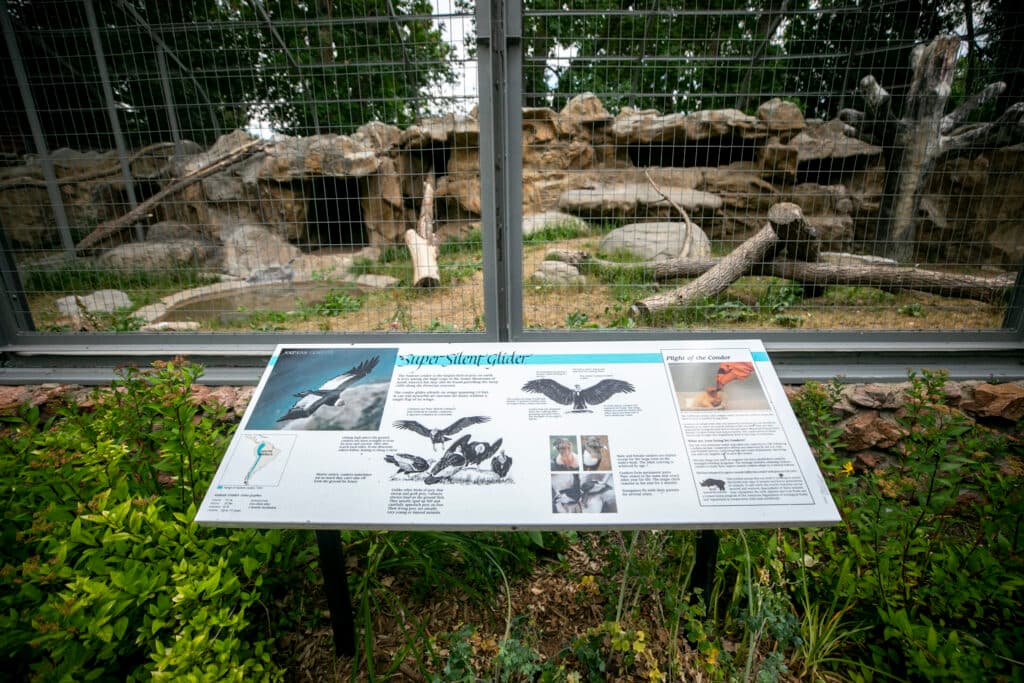
The unusual ornithology started with a conversation.
Henry Tinoco Vega, the DZCA’s environmental advisor for its Peru program, and his team had been working in the Junin and Pasco regions of Peru as part of the organization’s global effort to protect endangered and vulnerable animals.
They were visiting local schools and farming communities to help protect another at-risk animal — the giant frog. But the farmers were more interested in talking about the Andean condors they had seen flying in the high mountain peaks surrounding their towns.
“They told us they didn’t know what condition the birds were in,” Tinoco Vega said in Spanish, “and that there was no interest from government organizations to work in these areas due to how remote and rural they are, so we proposed to do a diagnostic.”
So, Tinoco Vega and his team started studying the condors in 2022. They would go on daily hikes, trying to spot the condors and keeping a record of how many they saw. They walked between five and seven hours up the mountain range each day.
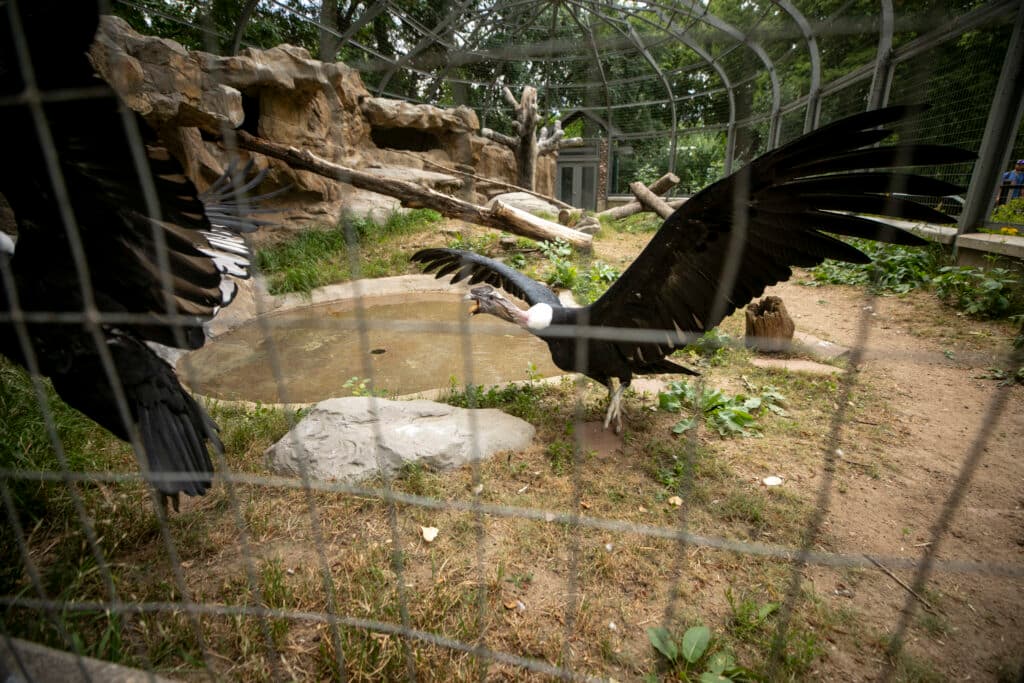
It was physically taxing and the extreme terrain made it difficult to spot the birds, but it paid off. They identified four areas to center their efforts: Mal Paso, Hueghe Lagoon, the Lancari population district and the Quisque Production Unit.
Then they brought in the drones.
Condors in decline
Condors live across the Andean mountain range at an elevation of over 5,000 feet. For countries like Colombia and Chile, the bird is a national symbol.
Over the last decade, however, the condor population has been declining.
“Sometimes I just sit down to look at the condors because it is a bird that represents the Andean culture, and I’m Andean, with a lot of pride,” Tinoco Vega said. “If you listen to the condors fly by, it is like music. I feel this, like, emotion to work for this species."
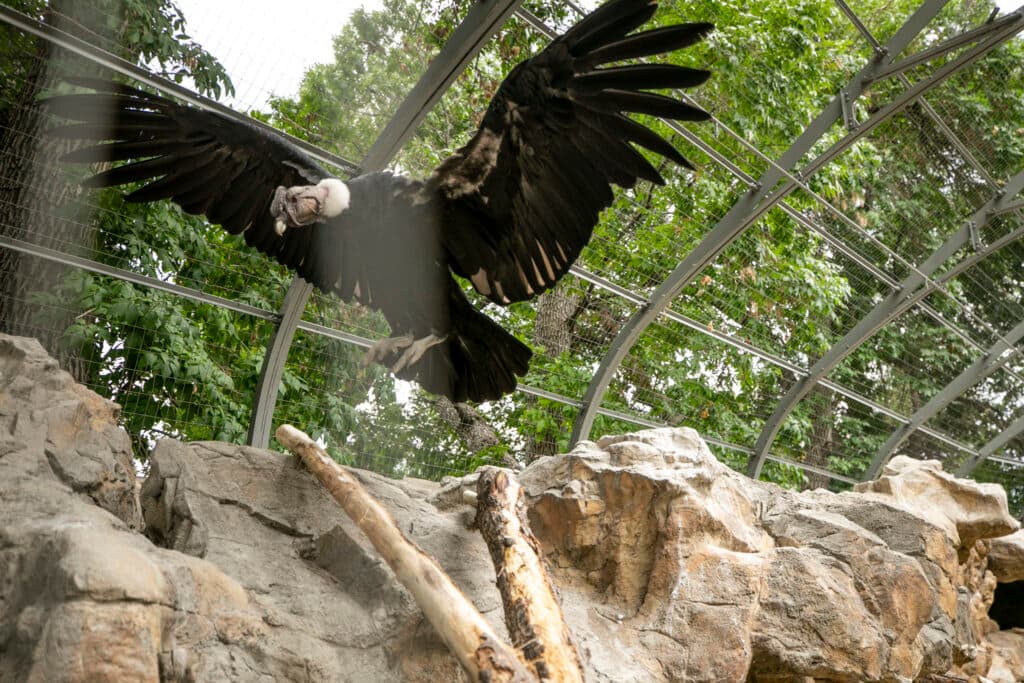
In 2020, the International Union for Conservation of Nature’s Red List of Threatened Species, classified the Andean condor as a vulnerable species. The organization estimated a decline of 30 to 49 percent of the population over three generations.
The decline is especially exacerbated by human persecution and illegal trade. Sometimes farmers intentionally poison condors in order to protect livestock. On other occasions, people will mistreat the bird during folklore celebrations.
Condors are also killed or injured in collisions with electrical and telecommunication infrastructure. Meanwhile, they are losing their habitat to farms and plantations and competing for food with the American black vulture.
Drones for birds
In 2022, the DZCA team attended the Drone and Robotics Summit in Texas. It showed them how remotely operated machines could change their work.
“We started looking into how technology could be tied with biodiversity conservation or how technology could help us get closer to the species,” Tinoco Vega said. “There had been other research where drones were used to identify flamingos and penguins, but no condors.”
At the conference, an anonymous donor gave Tinoco Vega and his team a remotely piloted aircraft system (RPAS). The drone could document the condors in areas the team couldn’t walk or drive to — maybe they could even use it to find a nest.
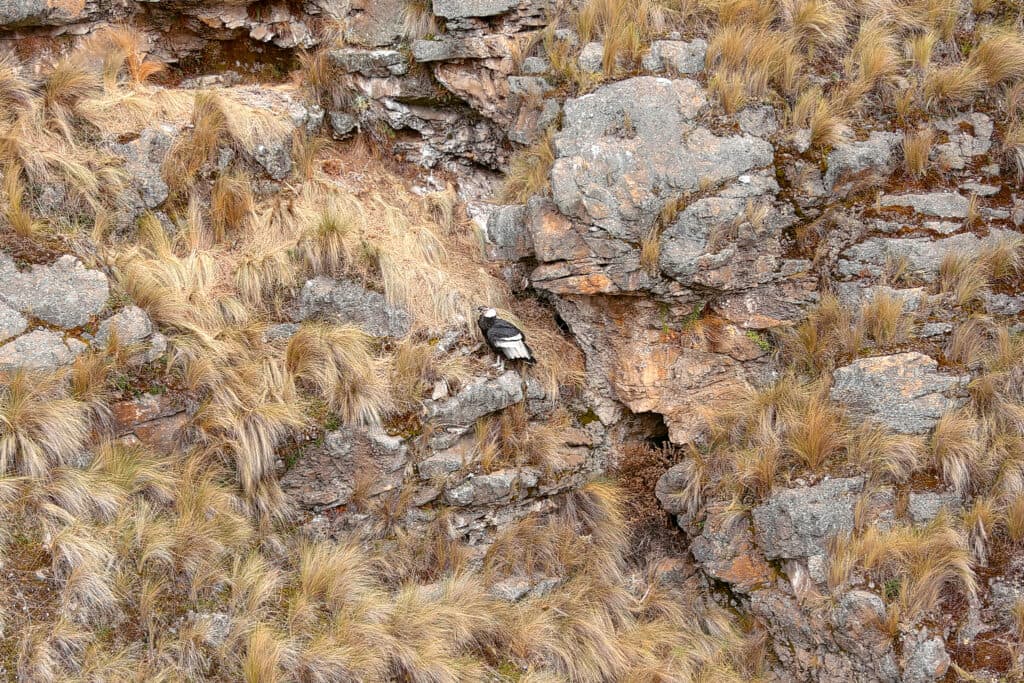
A nest would be a sign that condors are thriving in the areas Tinaco Vega and his team were studying — an indication that conservation plans by DZCA could be successful.
Tinoco Vega set out then to get his team licensed to handle the drone. But that was the easy step.
Later came the bigger challenge: developing a methodology to use drones to photograph and count the condor population without scaring the birds away. No one had ever done condor research with a drone, as far as they know.
The process was slow. At first, Tinoco Vega was just testing how high and far the RPAS could travel while complying with Peru’s drone regulations. Then, he started to adapt the methodology used by researchers Diego Gallego and Jose H. Sarasola in Argentina. They had successfully used drones to document the breeding status of an endangered raptor.
“We saw that they [Gallego and Sarasola] were getting as close as 32 feet from the endangered raptor, so we tried to adapt that,” Tinoco Vega explained. However, condors are bigger than the Argentinian raptor and the drone the DZCA team was using was noisier.
“The distance had to be larger to account for that noise and the bird’s size. We also needed to think about the equipment not hitting boulders and getting damaged.”
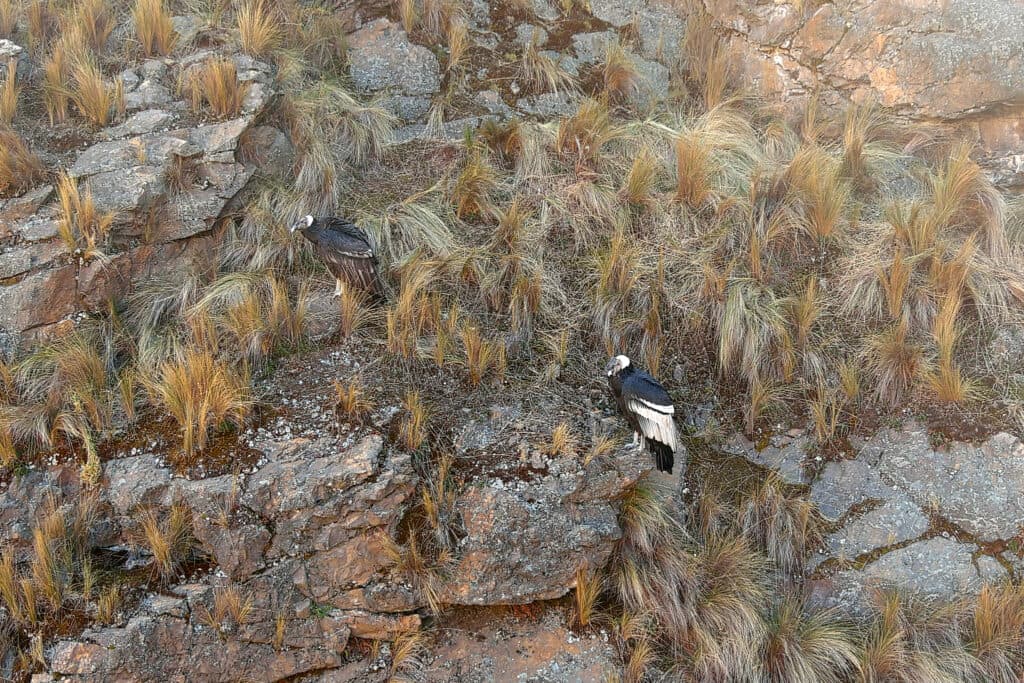
Ultimately, the team decided to get as close as 65 feet while watching with binoculars to see if the birds were uncomfortable or agitated.
They first deployed the drone in November.
The drone allowed them to document defecation and feeding areas for the condors within the four locations they had already identified in 2022. These signs confirmed that conservation efforts in Junin and Pasco could be successful.
The best was still to come, though.
'We had documented a chick without realizing'
Tinoco Vega and his team documented 11 condors in the November census: seven adults and four juveniles, including a courting couple.
But it wasn’t until the fifth day of the census that Tinoco Vega made a discovery while looking at the photos taken by the drone.
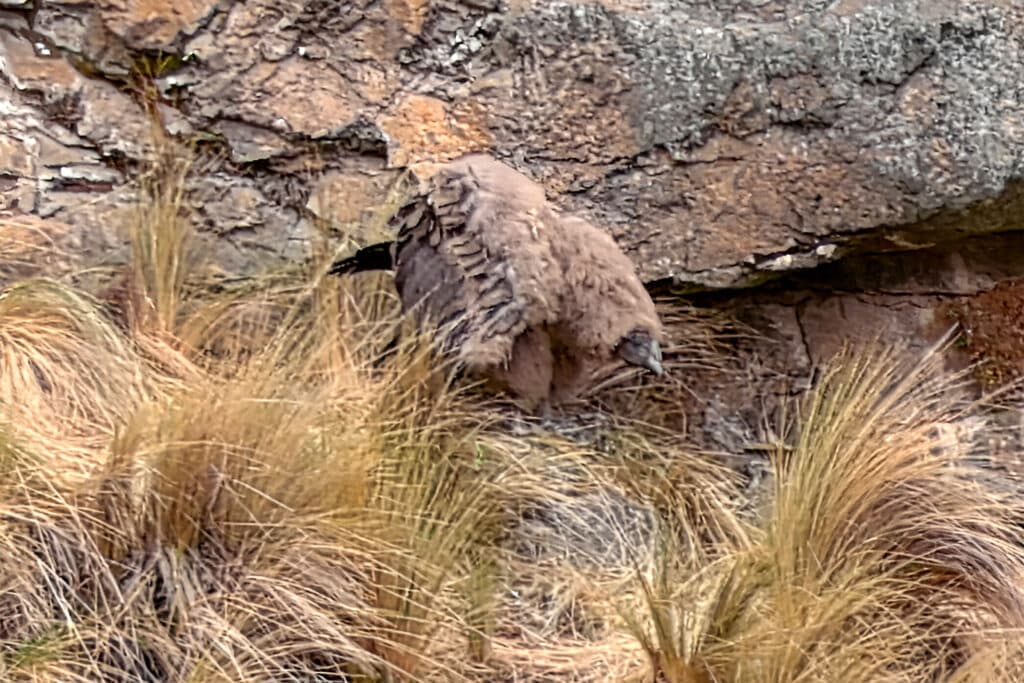
“Among them, I saw this weird spot," Tinoco Vega recalled. “And when I zoomed in, I jumped, because it was a chick. We had documented a chick without realizing.”
Next to the chick was the nest. Tinoco Vega and his Peru team informed DZCA of the discovery immediately. It was only the fourth time an Andean condor chick and nest had been documented in the country, and the first with a drone.
What’s next?
Tinoco Vega and DZCA are developing a conservation plan for the four condor areas identified in the 2022 and 2024 censuses. They hope to work with local farming communities and host educational workshops on how to protect the condors and minimize damage to their habitat.
They will be doing another census in August to monitor the condor population and gather more information about their habits and role in the ecosystem.
“For us, the reception and interest we have received from these communities is beautiful. Many times it is them who say that if the condor comes and takes an animal, it is okay because it is a tribute for the condor,” Tinoco Vega said. “They have respect for the bird and they feel the condor is close to them, a part of their community.”
